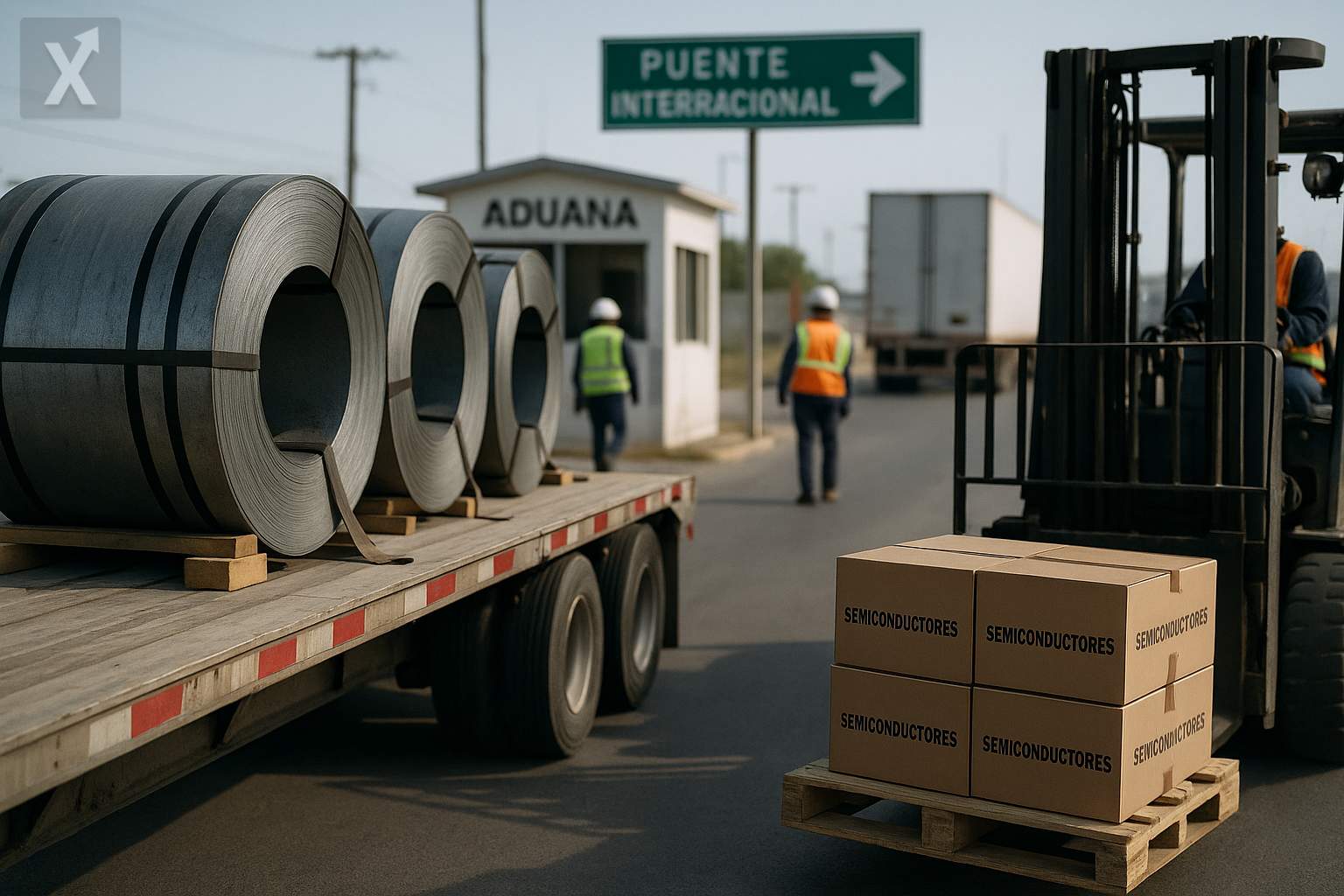Possible U.S. Tariffs on Steel and Semiconductors Increase Uncertainty for Mexico

The anticipation of new U.S. tariffs on steel and semiconductors, recently announced by former President Donald Trump for the coming weeks, has once again put North American trade under strain. According to his statements, the tariffs would start at moderate levels and ramp up over time, with the goal of incentivizing domestic manufacturing in the U.S. In the case of chips, Trump has previously suggested tariffs of up to 100%, with exceptions for companies that invest in productive capacity within the country.
For Mexico, whose economy is deeply integrated into U.S. value chains, the potential impact is significant. Mexican steel—mainly produced in states such as Nuevo León, Coahuila, and Michoacán—counts the U.S. as its main market. An escalation in tariffs would increase costs, squeeze margins, and could redirect trade flows, as happened during the 2018 episode when tariffs justified by national security led to retaliation and subsequent negotiations. In semiconductors, Mexican manufacturing depends on importing chips for key industries like automotive, appliances, and electronics; high tariffs on components crossing into the U.S., or uncertainty about enforcement rules, could disrupt delivery times and drive up inventory costs.
The backdrop is a nearshoring environment that has boosted investment in Mexico, particularly in the Bajío and northern regions, and is grounded in the certainty provided by the USMCA. Sweeping tariffs imposed by Washington outside of the trade agreement’s mechanisms would open the door to consultations, potential dispute panels, and possible mirror measures—a process that would increase short-term volatility. Timing also matters: the 2026 USMCA review is approaching, making any trade friction with the potential to set precedents even more relevant.
In steel, Mexican companies have been under pressure from global oversupply and competition from low-cost products, while the Ministry of Economy has adopted temporary measures targeting certain steel imports to contain unfair practices. If the U.S. hardens its stance with escalating tariffs, local producers might find new opportunities in the domestic market but also face risks such as trade diversion and stricter border inspections. How major buyers in the U.S.—construction, energy, and automotive—react will be key to determining whether costs are passed on to prices or if volumes are cut.
In semiconductors, Mexico has sought to strengthen its capabilities in chip design, testing, and packaging, with a presence in states such as Baja California, Chihuahua, and Jalisco, and coordination with the U.S. to map out the regional supply chain. Nonetheless, Mexico remains a net chip importer. Higher tariffs on the northern border, even with conditional exemptions, could lead to logistics reshuffling, changes in bill of materials, and shipment accelerations, affecting exporters’ cash flow and inventory planning.
From a macroeconomic perspective, higher trade barriers could drive up prices in sensitive sectors—autos, electronics, and machinery—and dampen the export momentum that has fueled manufacturing growth. In a context where broader inflation has been easing and Banxico’s monetary policy is gradually normalizing, an external cost shock would complicate the outlook, though the impact will depend on the scale, duration, and exemptions of the final tariffs.
In the short term, the Mexican private sector will be watching the fine print: which tariff lines will be included, how components incorporated into finished goods will be treated, and whether there will be differential treatment under the USMCA. Mexican authorities, for their part, may activate consultation channels and coordinate with Canada, which shares similar concerns about production linkages. It’s also likely that companies will accelerate shipments and adjust contracts to mitigate risks, which could produce temporary spikes in cross-border activity.
In summary, the possibility of new U.S. tariffs is raising uncertainty for Mexican manufacturing just as nearshoring is sustaining the current investment cycle. The outcome will depend on regulatory details and the institutional response under the USMCA. If the measures are broad and persistent, Mexico will face cost and logistics pressures; if they are targeted and coordinated, the impact may be manageable. Close monitoring of official channels and business preparedness will be critical in the coming weeks.






